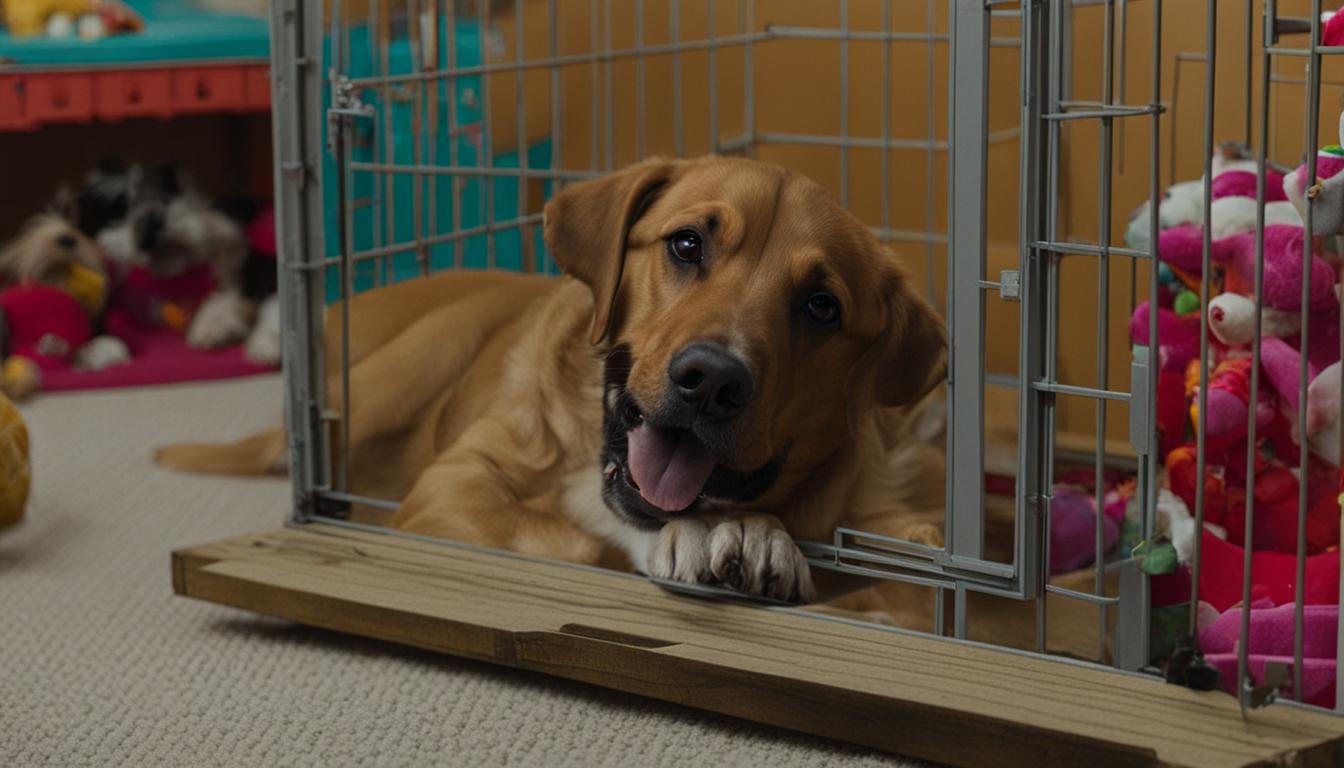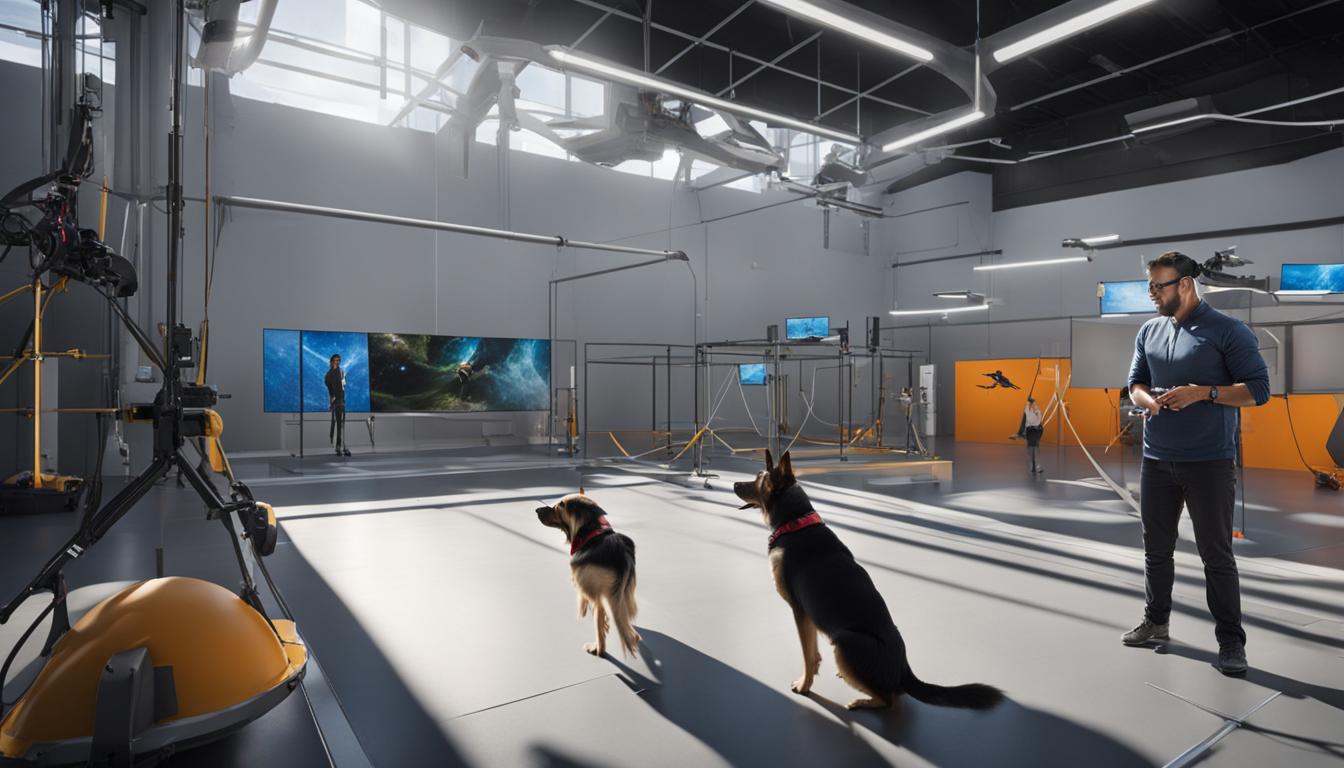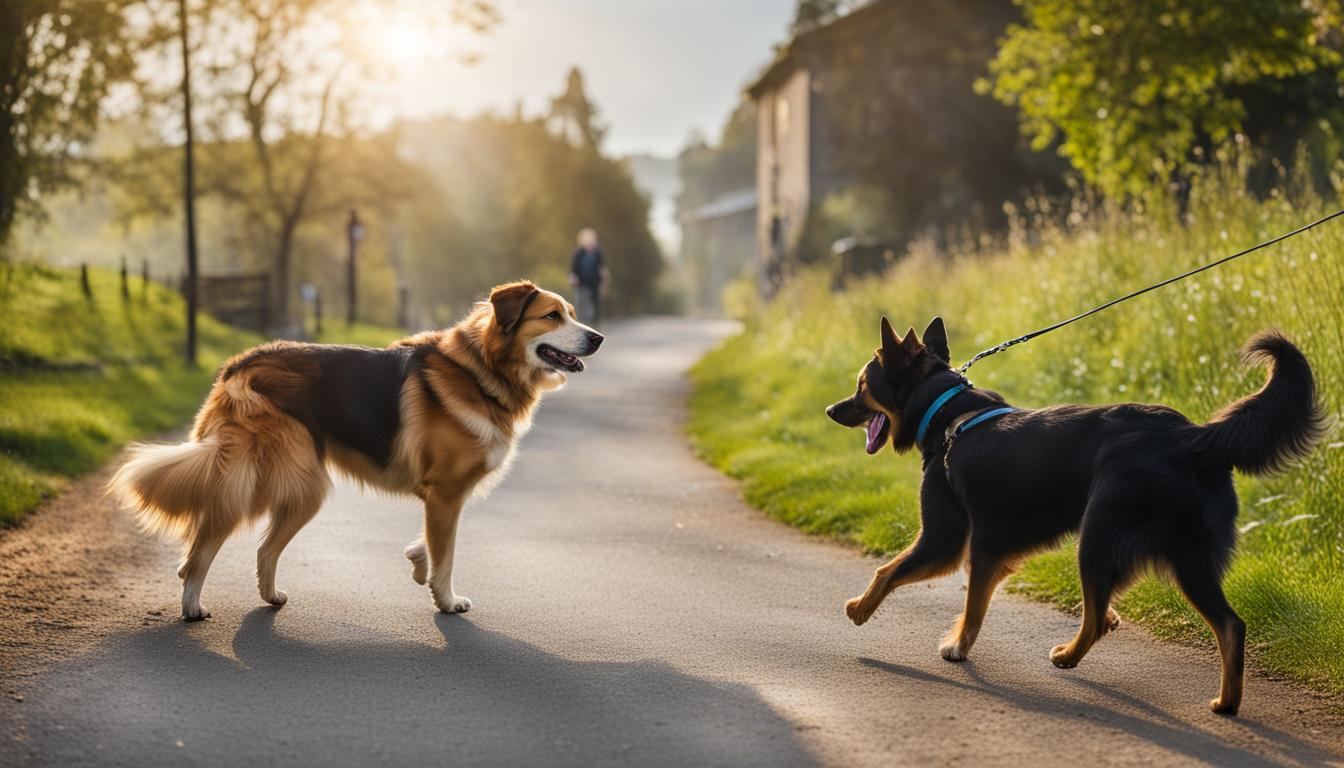Welcome to our comprehensive guide to crate training, where we’ll explore the various techniques and benefits of this invaluable tool for dog owners. Crate training, when done correctly, can help with potty training, ensure your dog’s safety when unsupervised, and provide them with a comfortable and secure space to relax. By following proper crate training methods, you can establish a harmonious living environment for both you and your furry friend.
Key Takeaways:
- Crate training is a valuable tool for dog owners.
- It helps with potty training and ensures your dog’s safety.
- Proper crate training creates a comfortable and secure space for your dog.
- Positive reinforcement techniques are essential for successful crate training.
- Consistency and patience are key during the training process.
Understanding Crate Training
When it comes to crate training, there are many misconceptions floating around. Some believe it’s cruel or confining, but in reality, crate training can be a beneficial and valuable tool for both dogs and owners. So, what is crate training exactly? It involves introducing your dog to a crate as a safe and comfortable space that taps into their natural instincts for shelter and safety.
Contrary to popular belief, crate training is not about confining your dog all the time. It should be balanced with exercise, mental stimulation, and social interaction. The crate serves as a den-like space where your dog can relax and feel secure. It becomes their own personal sanctuary in your home.
It’s important to have patience and consistency during the crate training process. Rushing or using the crate as a form of punishment can create negative associations. Instead, make the crate a positive and inviting space by using treats, toys, and cozy bedding. This helps your dog develop a positive association with the crate and improves their overall behavior.
In summary, crate training is not cruel or confining when done correctly. It provides a safe and secure space for your dog, taps into their natural instincts, and helps improve their behavior. By understanding the benefits of crate training and dispelling the myths surrounding it, you can create a positive environment for your dog to thrive.
Choosing the Right Crate
When it comes to crate training your dog, selecting the right crate is crucial for their comfort and safety. There are different types of dog crates available, each with its own benefits and considerations.
Types of Dog Crates
Two common types of dog crates are plastic crates and metal crates. Plastic crates are durable, lightweight, and provide a sense of privacy for your dog. They are also easy to clean and have a visual barrier, which can help some dogs feel more secure. On the other hand, metal crates are sturdy, allow for better ventilation and visibility, and are foldable for easy storage and transportation.
Consider your specific needs and your dog’s preferences when choosing between plastic and metal crates. If you’re looking for something portable and easy to clean, a plastic crate may be the better option. If you want better airflow and visibility, a metal crate may be the right choice for you and your dog.
Selecting the Correct Size Crate
It’s important to select a crate that is the correct size for your dog. A crate that is too small can be uncomfortable and restrictive, while a crate that is too big may encourage your dog to use one corner for potty purposes.
Measure your dog’s height and length to determine the appropriate crate size. The crate should be large enough for your dog to stand up, turn around, and lie down comfortably. Adding 2-4 inches to the measurements will provide some growing room for your furry friend.
Considerations for Crate Selection
When choosing a crate, consider factors such as your dog’s behavior, age, and purpose for crate training. For example, if you have a puppy who will eventually outgrow their crate, you may opt for an adjustable crate with a divider that can be moved as they grow. If your dog is prone to anxiety or has a tendency to chew, a more durable and escape-proof crate may be necessary.
Additionally, think about the crate’s location in your home. Make sure it’s placed in an area that allows your dog to still feel part of the family while being away from distractions or excessive noise.
By carefully considering the type, size, and other factors when choosing a crate, you can provide your dog with a comfortable and secure living space that will aid in their crate training journey.
| Type of Crate | Benefits | Considerations |
|---|---|---|
| Plastic Crates | – Lightweight and portable – Provides privacy – Easy to clean |
– Can feel more confining – May not allow for as much airflow |
| Metal Crates | – Sturdy and durable – Better ventilation and visibility – Foldable for easy storage and transportation |
– May be less secure for anxious dogs – Can be noisier |

Conclusion
As you reach the end of this comprehensive guide to crate training, you now understand the numerous benefits it offers for both you and your dog. Crate training provides a safe and secure space for your furry friend to rest and relax, ensuring their well-being and comfort. It also aids in potty training, helping you establish a routine and prevent accidents in the house. Additionally, crate training keeps your dog safe when you can’t supervise them, preventing them from getting into mischief or potential harm.
By implementing positive reinforcement techniques throughout the training process, you can create a positive association for your dog with the crate. This means they will view it as their own personal sanctuary, a place where they can feel secure and at ease. Remember to be patient and consistent, allowing your dog to adjust to the crate at their own pace.
Overall, crate training is a valuable tool that can enhance the bond between you and your dog, while providing them with a comfortable and secure space of their own. So, embrace the benefits of crate training and embark on this positive journey with your furry companion.
FAQ
Is crate training cruel or confining for dogs?
No, crate training, when done properly, is not cruel or confining. It taps into the dog’s natural instincts and provides them with a safe and comfortable space.
How can crate training benefit my dog?
Crate training offers several benefits for dogs, including aiding in potty training, providing a safe space when unsupervised, and creating a positive association with the crate.
What type of crate should I choose for my dog?
The choice of crate depends on factors like portability, visibility, and ease of cleaning. Plastic and metal crates are popular options.
How do I select the right size crate for my dog?
It is important to measure your dog and choose a crate that allows them to stand up, turn around, and lie down comfortably. Adding a few inches for growing room is recommended.
How can I make the crate a welcoming space for my dog?
Use positive reinforcement techniques by placing cozy bedding, familiar scents, and enticing toys inside the crate. Gradually introduce treats and meals to encourage your dog to enter.
How do I start crate training my dog?
Begin by allowing your dog to explore the crate at their own pace. Use treats, toys, and positive reinforcement to encourage them to enter. Gradually increase the time spent in the crate.
What should I avoid when crate training my dog?
Avoid punishing or forcing your dog into the crate, as this can create negative associations. Instead, focus on positive reinforcement and consistency.
What are the benefits of crate training?
Crate training provides a safe and secure space for dogs, aids in potty training, and helps establish a harmonious living environment for both dogs and owners.





